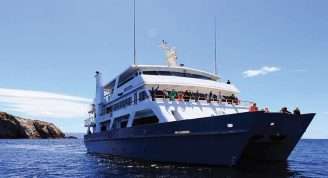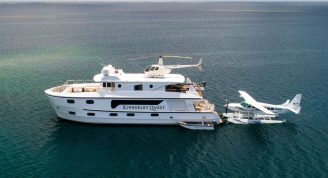Description
The Sepik Soiree is a voyage of contrast, from the freshwater lakes of the mighty Sepik River to the turquoise blues of Hermit Atoll and the towering jungle volcanoes on Bagabag Island.
The Bismarck Sea lies in the centre of the famed Coral Triangle and offers extraordinary water clarity and a kaleidoscope of fishes and corals. Sport fishermen will share the excitement with regular hook-ups on sailfish, black marlin and wahoo as well as the opportunity to entice the revered Papuan black bass.
Then join the TRUE NORTH on a Sepik River cruise – a 100km adventure featuring the crocodile initiation ceremonies at Yentchen and, opportunity to visit the stilt-villages of Kambaramba Lake where whole communities live suspended above the water.
Collect sought-after art at the Angoram carvers market, meet the Polynesian seafarers of Ninigo Atoll and listen to the thunder of the split-log drummers from Manus Island.
From Kavieng to Madang revel aboard the TRUE NORTH as we traverse the Bismarck in style!
Return charter flights ex Cairns ARE INCLUDED in the cruise tariff.













